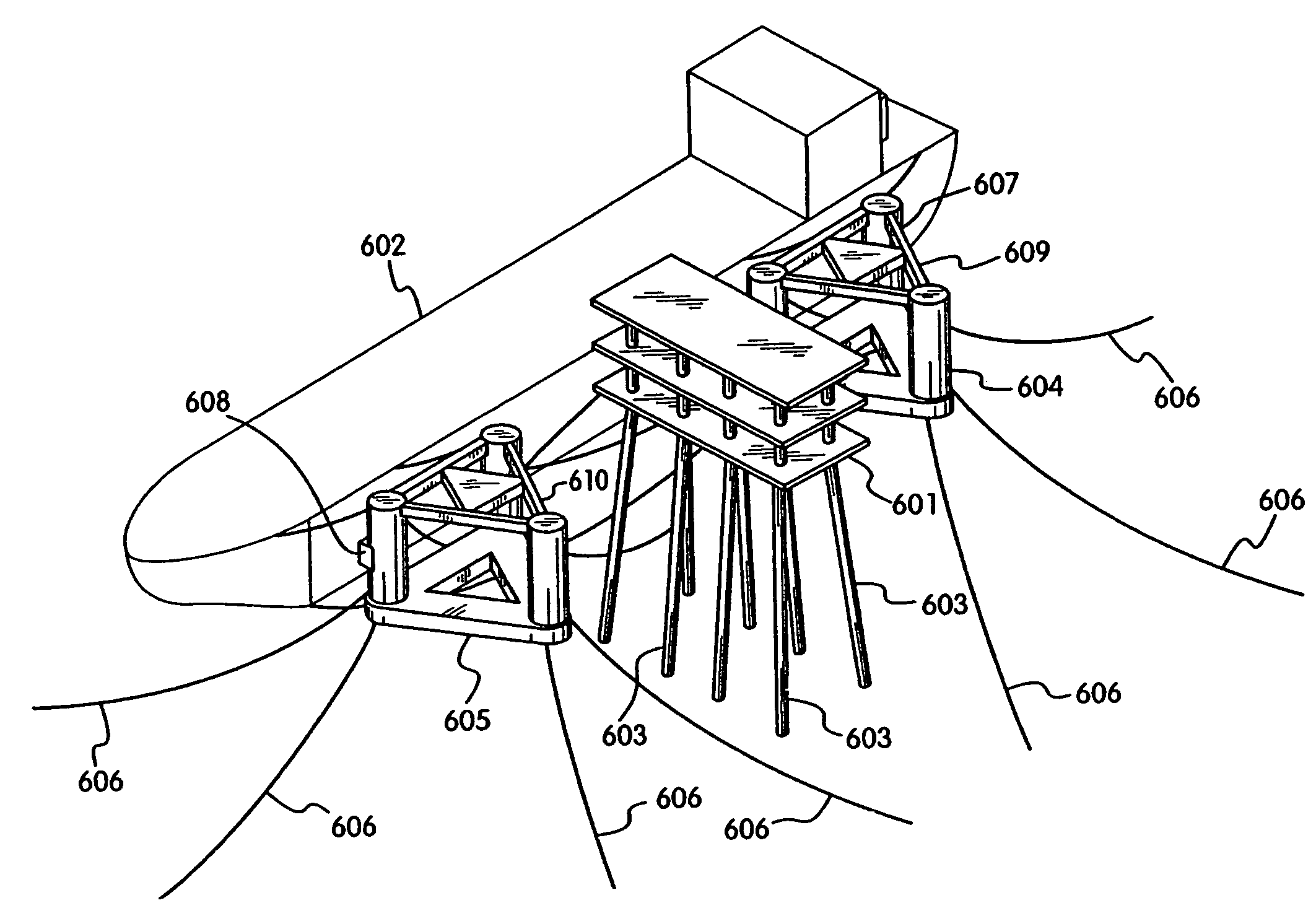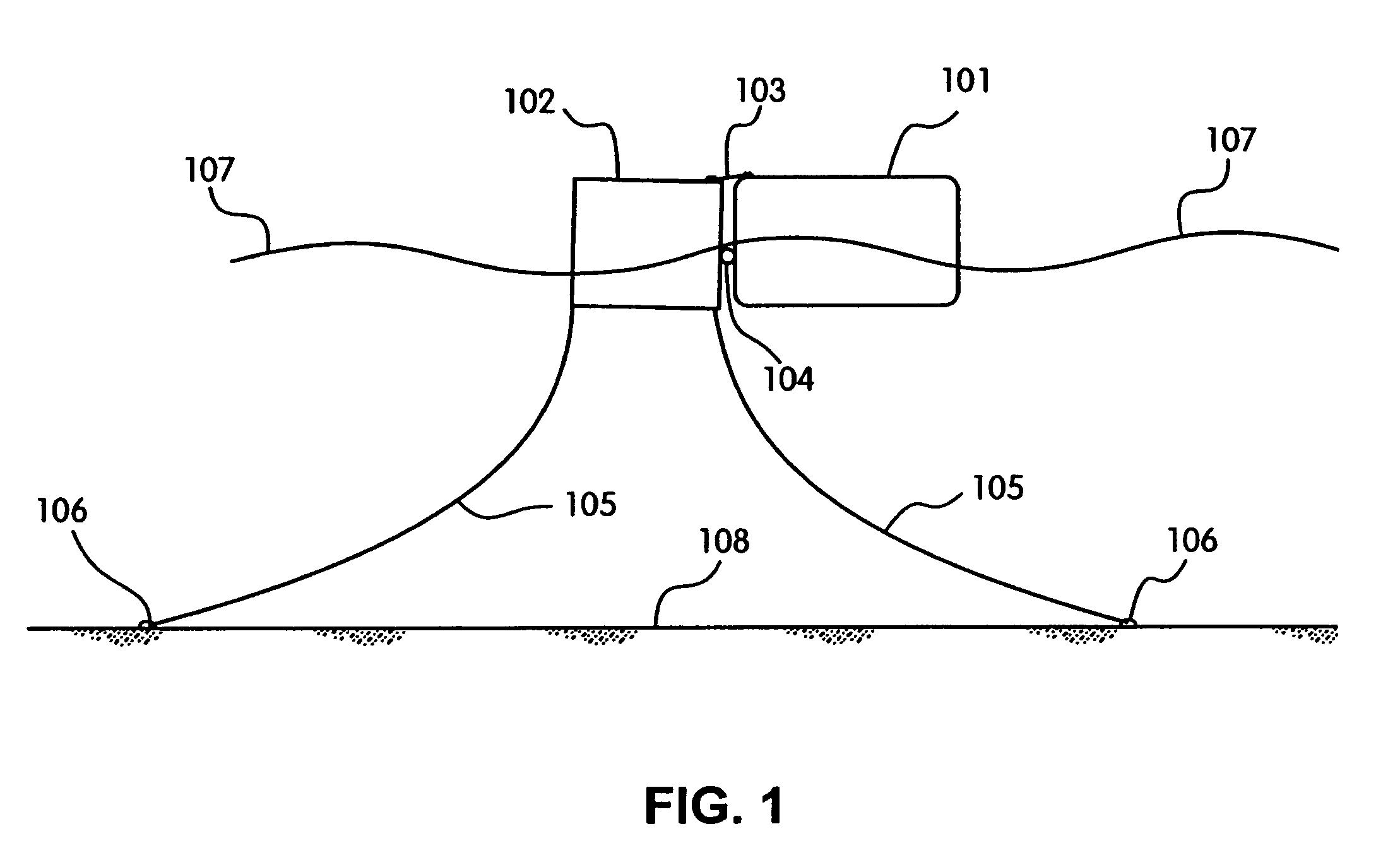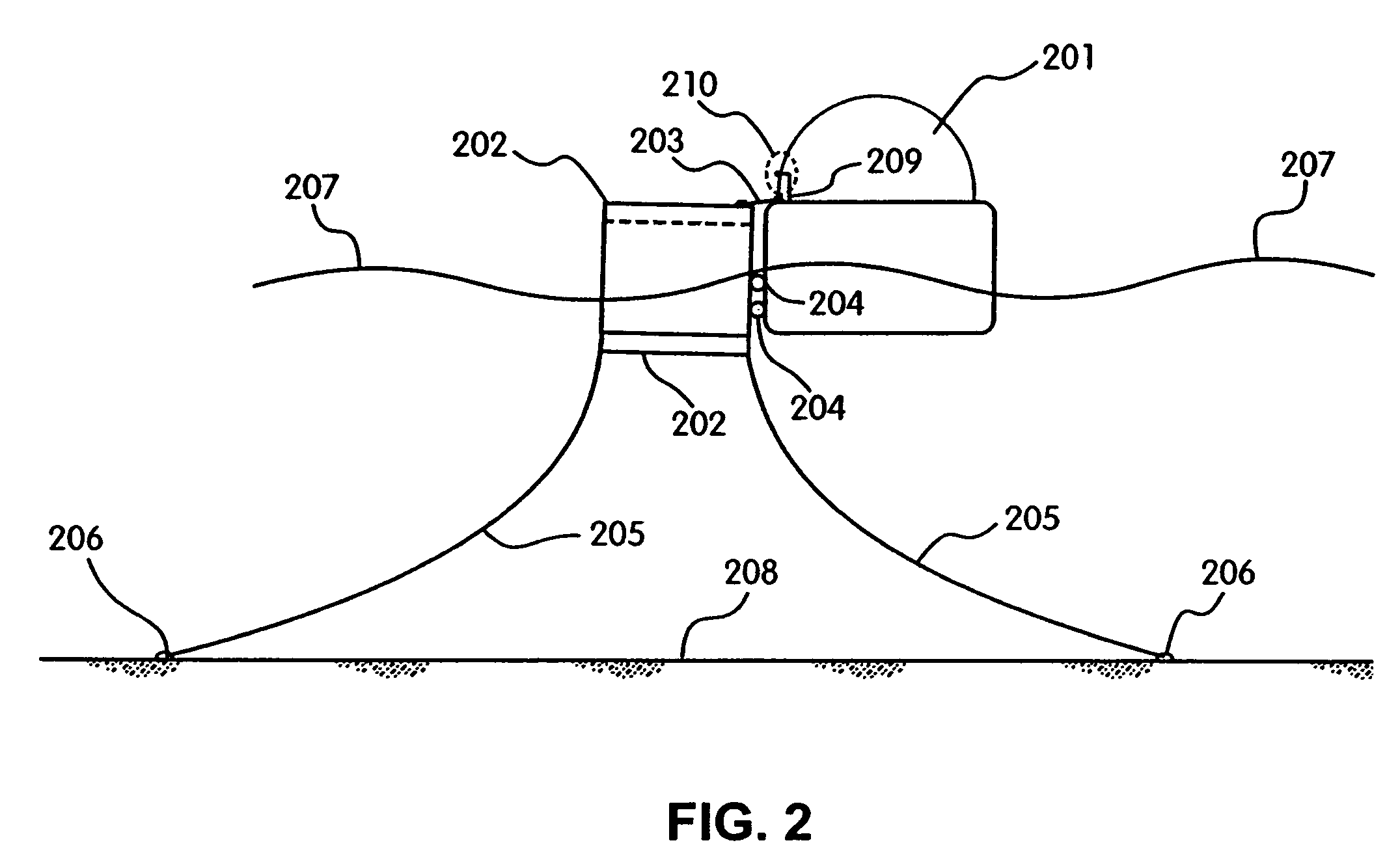Berthing method and system
a berthing method and a technology for marine vessels, applied in the direction of vessels, special-purpose vessels, cargo loading and unloading, etc., can solve the problems of unprotected waters, unadjusted loading and unloading of cargoes, and the risk of accidental cargo spillage and frozen lines, so as to reduce environmental impact, minimize operating and maintenance costs, and minimize inventory losses
- Summary
- Abstract
- Description
- Claims
- Application Information
AI Technical Summary
Benefits of technology
Problems solved by technology
Method used
Image
Examples
Embodiment Construction
[0022]Referring to FIG. 1, vessel 101 is shown berthed by means of floating dolphin 102, which is provided with fendering means 104. Relatively stiff hawser lines 103 provide a secure attachment between floating dolphin 102 and vessel 101 and complement the function of fendering means 104 in permitting the vessel and the dolphin to move in concert with each other and dissipate much of the first order wave forces from water surface 107. Floating dolphin 102 is attached to bottom 108 by means of relatively soft mooring lines 105 and anchors, or piles, 106.
[0023]FIG. 2 depicts the berthing of a large vessel, such as a tanker used to transport LNG, CNG and similar cryogenic fluids, by means of the method of the invention. In this depiction, tanker 201 is shown berthed alongside by means of two floating dolphins 202, provided with fendering means 204. Relatively stiff hawser lines 203 provide a secure way of attaching floating dolphins 202 to tanker 201 and, together with fendering means...
PUM
 Login to View More
Login to View More Abstract
Description
Claims
Application Information
 Login to View More
Login to View More - R&D
- Intellectual Property
- Life Sciences
- Materials
- Tech Scout
- Unparalleled Data Quality
- Higher Quality Content
- 60% Fewer Hallucinations
Browse by: Latest US Patents, China's latest patents, Technical Efficacy Thesaurus, Application Domain, Technology Topic, Popular Technical Reports.
© 2025 PatSnap. All rights reserved.Legal|Privacy policy|Modern Slavery Act Transparency Statement|Sitemap|About US| Contact US: help@patsnap.com



